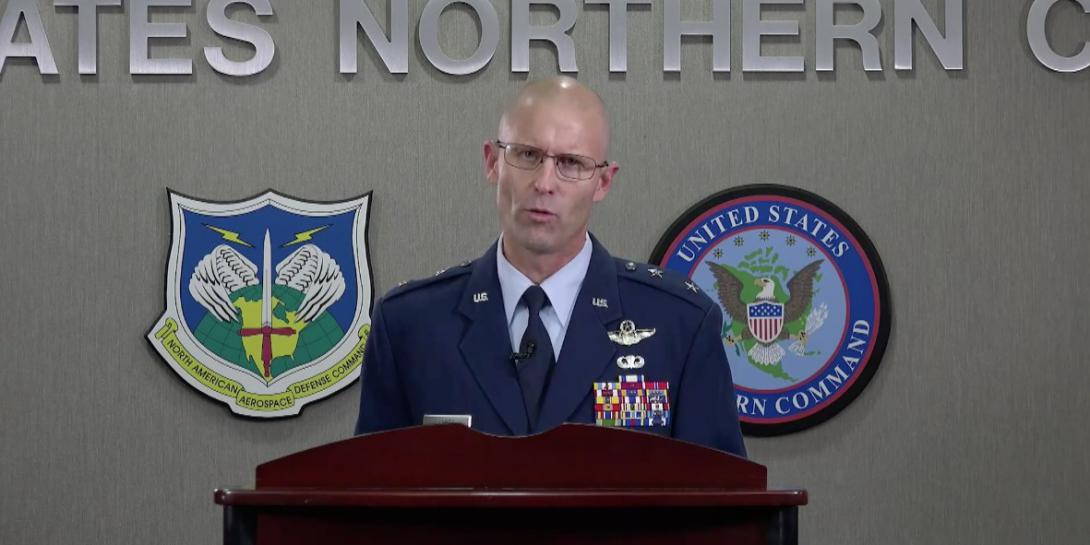JADC2 Is a Cornerstone of NORAD and U.S. Northern Command’s Future
For the military commands that protect the United States on a 24/7 basis, the ability to have real-time information from a sophisticated sensor network is essential. Given the growing threats of U.S. adversaries to the homeland, the North American Aerospace Defense Command (NORAD) and the U.S. Northern Command (NORTHCOM) are already harnessing the capabilities that Joint All Domain Command and Control (JADC2) offers, including enhanced sensing, artificial intelligence, data integration and information convergence.
“When it comes to homeland defense, NORAD and NORTHCOM are a very demanding customer, and we're leading the way and achieving irreversible momentum and showing the enormous value and capability that Joint All Domain Command and Control will bring,” said Maj. Gen. Kevin Huyck, USAF, director of operations, U.S. Northern Command. “JADC2 will enable us to deter and deny in daily competition, deescalate in crisis and yes, defeat in conflict.”
Gen. Huyck spoke yesterday with a panel of NORAD and NORTHCOM leaders at AFCEA Rocky Mountain Chapter’s Cyberspace Symposium being held March 8-11 both virtually and at The Broadmoor in Colorado Springs, Colorado.
The commands are fundamentally changing the way they approach homeland and continental defense, stated Brig. Gen. Paul Moga, USAF, deputy director of operations, NORTHCOM Headquarters, Peterson Air Force Base, Colorado. And all of the commands’ strategies, operational plans and budget decisions reflect the shift to confronting symmetric and asymmetric threats as well as local, regional and national crises, said Gen. Huyck. He also noted that leaders signed off on NORAD’s latest strategy yesterday.
“China and Russia have developed anti-denial, anti-access capabilities along their periphery,” added Col. Matthew Eberhart, USA, director, Commander’s Initiatives Group, NORAD and NORTHCOM. “But what we are focused on today is what they've done outside of that. [We are] identifying the capabilities that they need to be able to hold us at risk at home, as part of a broader fight, in order to change that calculus both for them and for us from the deterrence and homeland defense perspective.”
The joint command and control system needed to see and operate in all domains is at the heart of handling these threats. “To be clear we do not see JADC2 as only focused on the defeat portion of the end game, the kill chain,” Gen. Huyck noted. “It is extremely important. However, the real value in JADC2 data centric-capabilities is in deterrence and denial. When we can close the information gap and enable decision space, we can then operate inside a competitor’s decision cycle.”
“What we are trying to do at NORAD/NORTHCOM is to try to have the capabilities that we need to be able to achieve information dominance globally,” Col. Eberhart said. The critical capabilities and associated requirements they require include “a persistent, all domain awareness, layered sensing grid that goes from our subsurface sensors in the oceans all the way up to our on orbit sensors and cyberspace,” he explained. “With domain awareness and information dominance, at that point we will be able to act earlier.”
For industry, the colonel stressed that they are not looking for bespoke sensor solutions. The two commands want to be able to integrate existing data, sensor feeds and reporting streams into the same open architecture to provide an all domain picture. And the leader of both commands, Gen. Glen VanHerck, USAF, is working to make sure that those capabilities will be seamless across the other U.S. combatant commands, as well as with military allies. Col. Eberhart, who was meeting with Department of Homeland Security officials this week, also sees that extending to other federal agencies.
“The key point is to come up with decision-quality data,” the colonel noted. “And that's where we get over to decision superiority. We are talking about making decisions faster and better than the would-be adversary.”
In addition, NORAD and NORTHCOM are building on the initial success of the Pathfinder project, which involved the construction of data architecture to integrate machine learning applications and automation, with domain information from various sensors. The result provides “tools that reduce human workload and give us a common picture for decisions superiority,” Gen. Huyck said.
The leaders successfully applied the artificial intelligence piece to JADC2 capabilities during the latest on-ramp demonstration of JADC2, reported Col. Matthew Strohmeyer, USAF, JADC2 lead, NORAD and NORTHCOM. “It is machines running in the background, developing the best course of action for how we might best intercept potential threats,” he said. “In this case, there was a potential air threat during the live demo. We had information on what the expected vector was of that threat and the time that they would get to a location. It presents the best course of action that it thinks, that the machine thinks that we could apply, whether it's an aircraft in this case and whether that aircraft would intercept. It also has access to all the other potential intercept options that exist out there. And what this gets us at the tactical level is more decision space, more time for senior leaders to be able to make decisions about what to do inside an actual crisis or conflict, so that we have better joint force defensive response options.”
And although the commands are seeing initial success from the information convergence that JADC2 enables, the leaders understand that more work is ahead. “It is important to note that we don't think we have all the right answers,” said Col. Strohmeyer. “But what we do know is that we are close to the operational requirement. We feel it every day.”
“JADC2 is an essential framework for success and we need your help, industries’ help to find creative innovative solutions,” Gen. Huyck said. “The enablers of a future fight must solve data security and access on agile and adaptable infrastructure that is able to operate across many security levels while blending interoperable data feeds.”





Comments